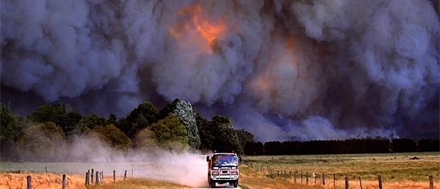
Australian scientists have discovered that forest soils need up to eight decades to recover from bushfires and logging, not just 10 or 15 years. Their findings could change the way forests are managed, with implications on climate change and forest sustainability. Source: ABC News
Scientists studied the soil from Victoria’s Ash Mountain forests that supplies water to the entire population of Melbourne. Bushfires have always been a grim inevitability of Australian summers.
“It’s at least 30 years after logging, and at least 80 years after fire,” said David Lindenmayer, who was part of the team that studied forest soil regeneration.
David Lindenmayer, Professor of Ecology at the Australian National University, told The World Today that these soil recovery timeframes are “very conservative estimates and we suspect that it may be much longer… potentially up to 150 years”.
“These results are very significant for many reasons. First of all, it suggests that when we’re thinking about sustainable management of forests we have to think not only about the trees and the rest of the forest including biodiversity, but now we also have to think deeply about the soils,” he said.
Soil can determine how quickly the forest grows, the level of carbon in the forests and how much carbon is fixed or released from the soils, explained Professor Lindenmayer.
“It has climate change implications, it has sustainability implications, and it has implications for how we manage these important resources,” he said.
Professor Lindenmayer’s research showed that when there’s a major insult to soil – such as burning or logging – many essential nutrients are lost.
“What it suggests is that we need larger areas of undisturbed forests, that’s undisturbed by fire and logging to make sure that we maintain the health of these systems,” said Professor Lindenmayer.
“Now this really matters in the case of the Mountain Ash Forest outside of Melbourne, because as a consequence of fire and logging and the combination of both, 98.8% of that entire forest system which supplies most of the water to Melbourne is now 80 years or younger.
“There will be significant fire and logging effects on the soils, right throughout that entire forest.”
David Lindenmayer said the Victorian Government needs to step up in order to preserve the forest and Melbourne’s water supply “and look more deeply at how to manage these forests and set aside more protected areas that are exempt from these kinds of major disturbances such as logging and fire”.
Professor Lindenmayer told The World Today that “almost all of the timber out of this forest goes to make paper” and a solution would be to use plantation feedstock instead of native forest timber.
“We won’t lose a single job, in fact it will grow the forest industry to be more substantial than it is now, but using plantation feedstock, rather than using native forest,” he said.
Vic Forests is a state-owned business responsible for the harvest, commercial sale and re-growing of timber from Victoria’s state forests on behalf of the Government.
Alex Messina, the general manager of corporate affairs, told The World Today that Vic Forests was not consulted about the research, and pointed out that the study was a “piece of research about bushfire, not logging”.
“In the last decade, there’s been about three million hectares of bush burnt in Victoria, compared to harvesting, which is about 3000 hectares a year, or if you like 30,000 [hectares] over 10 years. ‘
“That means that the impact of logging is about 1% – in effect, this is a piece of research of fires, not about harvesting, and in any case, it finds that the effect of harvesting is substantially less.”
Mr Messina said that the state already preserves vast areas for conservation with 94% of public forests being reserved as national parks or state reservations that “can never be harvested”.
“We only harvest anywhere at all in that 6% area, and even in that 6% area we harvest a very small amount of forest — about 3000 hectares a year, or 0.04% of the entire Victorian public forests,” he said.
“That amounts to four trees in 10,000 per year being impacted by harvesting across the landscape of Victorian public forested area.”







